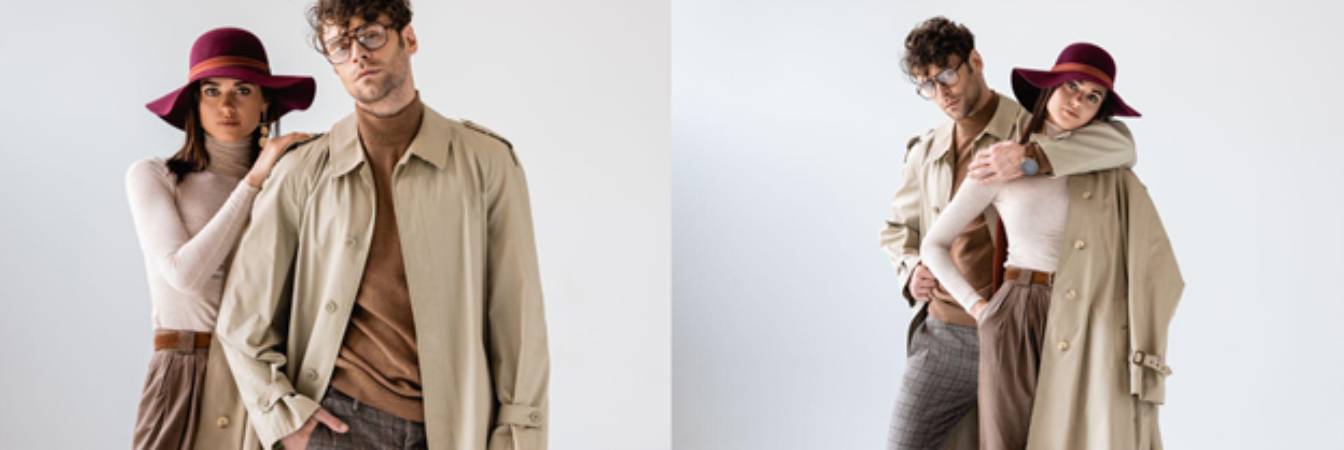The fashion and Apparel Trends industry has taken interesting directions over the past few years. Despite people being locked at home during the pandemic, they never stopped shopping. From the emergence of Zoom wear to the revival of Crocs, fashion carried on despite the chaos surrounding the world.
Some of these trends may have a lasting impact for years to come, which is why it’s essential to know them. Whether you sell how to start a clothing line uk for women or you’re looking to shop for children’s Christmas attires, staying aware of these trends is an absolute must.
Table of Contents
Interesting Facts in the Fashion Industry
Before we dive into the trends, let’s take a glance at some of the key interesting facts and statistics about the fashion and apparel trends on a global level.
- Over 100 billion items of clothing are produced each year. This translates to 14 items for every person on the planet.
- The global fashion and apparel trends is expected to hit $44 billion by 2028
- The average person wears 20% of the clothes 80% of the time
- Fashion companies produce more pollution than shipping and international aviation combined.
- The target market for fast fashion retailers is primarily made of consumers aged 18 and 24.
- Online shopping in the fashion industry is expected to hit 27% by 2023.
- Over 60% of clothes are made from plastic-based materials.
- Industries generate 92 million of textile waste annually.
- The fashion industry consumes 93 billion cubic meters of water every year.
- With a market valued at $ 349,555,America is a leader in global market shares. China comes second at $326,736.
Clothes Will Likely Become Genderless
For centuries, men and women have been placed in two distinct places. However, as many cultures continue to blur the lines and promote equality, people are beginning to warm up to wearing clothing they feel comfortable wearing as opposed to what has been designated to them based on their gender.
Manufacturers are already working on creating subtle forms of clothing that everyone can wear irrespective of their gender. Currently, there aren’t many genderless brands or unisex clothing. With time, we expect more brands to come out and produce not only genderless clothing for men and women but also for girls and boys.
A Shift Toward Inclusive Fashion
The rising cases of obesity around the world are alarming and have spurred the demand for on-trend plus-size fashion to cater to this particular group. In the past, plus-size clothing options were minimal, and consumers struggled to find stores selling their sizes.
Now manufacturers have plus-size people in mind and have developed many fashion styles, with some famous brands expanding their sizes. However, many luxury brands are yet to make similar moves to normalize double-digit sizing.
According to Alibaba, the market for plus-size clothing for women is expected to hit 46.6 billion by the end of the year. This is double what it was valued three years ago. Brand like SKIMs is producing pieces that work for more than people with fair skin tones.
Manufacturers have also seen the need to create wearables for people of all shapes, sizes, and occupations. Clothing can accommodate medical conditions requiring permanent hardware, like insulin pumps and catheters.
Continued Growth in Athleisure
As one of the most unmistakable trends that emerged during the pandemic, athleisure is here to stay. When people swapped their formal work clothes with yoga pants and t-shirts, the trend stuck as many people today are allowed to work from home.
Big brands like Tommy, Calvin Klein, Hilfiger, Athleta, and Dick’s Sporting Goods all reported solid sales for athleisure attire, while retail chains that sell suits and formal apparel struggled. Men’s Wearhouse, Brooks Brothers, J. Crew, and Neiman Marcus filed for bankruptcy during the pandemic.
As people learn the importance of staying fit and embracing comfortable clothing, the growing popularity of athleisure attire is only set to grow. According to the Technavio report, the global market for athleisure is expected to hit $153.02 billion by 2025, increasing steadily by 7%.
Ecommerce Will Keep Thriving
As already mentioned, the number of online shoppers will keep growing. This has mainly been catapulted by the lockdowns that encouraged online shopping for most shoppers. Apparel stores, hotels, and other businesses survived by selling their goods online. This trend is expected to grow as more companies go online and consumers rely on deliveries.
Consumers Will Seek the Perfect Balance Between Affordable and Sustainable Clothing
While it’s almost impossible to shop for sustainable clothing on a budget, it’s what most consumers want when shopping for clothing. The world is yet to heal from the economic impact caused by the pandemic and the current inflation. That means people will want to save as much as possible while ensuring every coin they spend is put to good use.
The fashion industry has a long way to go when creating affordable, environment-friendly, practical, and ethical clothes. Cheap price tags from fast fashion are hard to resist, and people buy these clothes to save or when on a tight budget.

